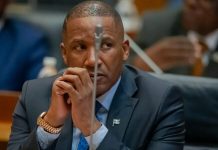writes Kevin P. Gallagher and Marina Zucker Marques
Africa-Press – Botswana. Through no fault of their own, Africa is facing a debt crisis. The international community needs to change its policies to put the continent back on the path to economic prosperity.
Quietly, the levels of external debt in Sub-Saharan Africa have almost tripled since 2008. Debt service payments are at an all-time high. Roughly 57 per cent of the African population, 751 million people, reside in a country that is spending more to service external debt than on education or health. This is occurring as developing countries (excluding China) are supposed to be mobilising an extra 3.5 per cent of GDP annually to invest in sustainable growth strategies that avoid the staggering consequences of inaction on climate change.
The World Bank refers to the current situation as a ‘silent debt crisis’ because the global community is not listening.
The math is clear: Africa cannot address the pressing needs of climate action and development without comprehensive debt relief, new forms of liquidity and concessional and grant finance to complement and reduce the cost of capital.
Africa prospects looked very promising in the early 2000s. Significant debt relief gave many nations in the region a clean slate, Chinese demand boosted commodity prices, and interest rates on foreign capital were at historically low levels. There was a surge of foreign capital into the region, especially by Chinese banks and even more so through private bond markets in the West. This investment further propelled the region’s prospects for prosperity.
The covid and debt pandemic
Prospects looked bright until Covid-19. The subsequent economic slowdown, exacerbated by climate shocks, wars, and interest rate hikes in the higher income countries have come one after another for a half-decade. Net flows to the region turned negative in 2022 —meaning more finance was leaving the continent than getting in leading to downward pressure on exchange rates was occurring. As a result, countries are slashing government spending and investment in education and health—two core ingredients of economic growth.
Beyond jeopardising public health and education, governments find themselves unable to spend in priority areas as climate action. This is specially concerning to Africa, where most climate vulnerable countries are situated. African countries annual debt servicing costs up to 2030 will be equivalent to 93 per cent of their climate finance needs. This debt service burden does not reflect Africa’s overborrowing, but rather the borrowing conditions in international markets. As the United Nations Trade and Development body reckons, Africa’s external borrowing costs in private markets are twelve times that of Germany. Mobilising private financing for African investment needs is near impossible and unsustainable.
A combination of debt relief and green growth initiatives are required to get Africa out of a permanent crisis and on a sustainable pathway.
First, the IMF’s ‘debt sustainability analyses (DSA)’ that form the basis of analysing the debt sustainability of a country needs to be reformed to include climate and development investment needs and have scenarios that incorporate external climate and other shocks. There are already numerous examples of conducting such analyses, and this would give African countries and the global community a better picture of the severity of the situation and the right instruments that might be needed for different countries in different circumstances.
Secondly, based on the DSA countries be at or near debt distress should be able to restructure their debts. Those countries that face high debt service levels and costs, should receive refinancing, new liquidity injections, and other incentives to reduce the cost of capital.
Finally, these efforts should be supplemented by financing from Multilateral Development Banks in a big push to support longer run green and resilient growth strategies. Expansionary growth responses to such situations have been found to improve credit worthiness while at the same shifting the economy toward new growth trajectories. In addition, investments in adaptation reduce sovereign risk and thus the cost of capital in other ways. In contrast, fiscal consolidation lowers growth and creditworthiness and can have long run impacts on poverty and growth over time.
The G20 in South Africa and the United Nation’s Finance for Development Conference are key venues where government, policy makers and civil society can call for actions. The year of 2025 is the chance to be loud about the ‘silent debt crisis’.
LSE
For More News And Analysis About Botswana Follow Africa-Press






